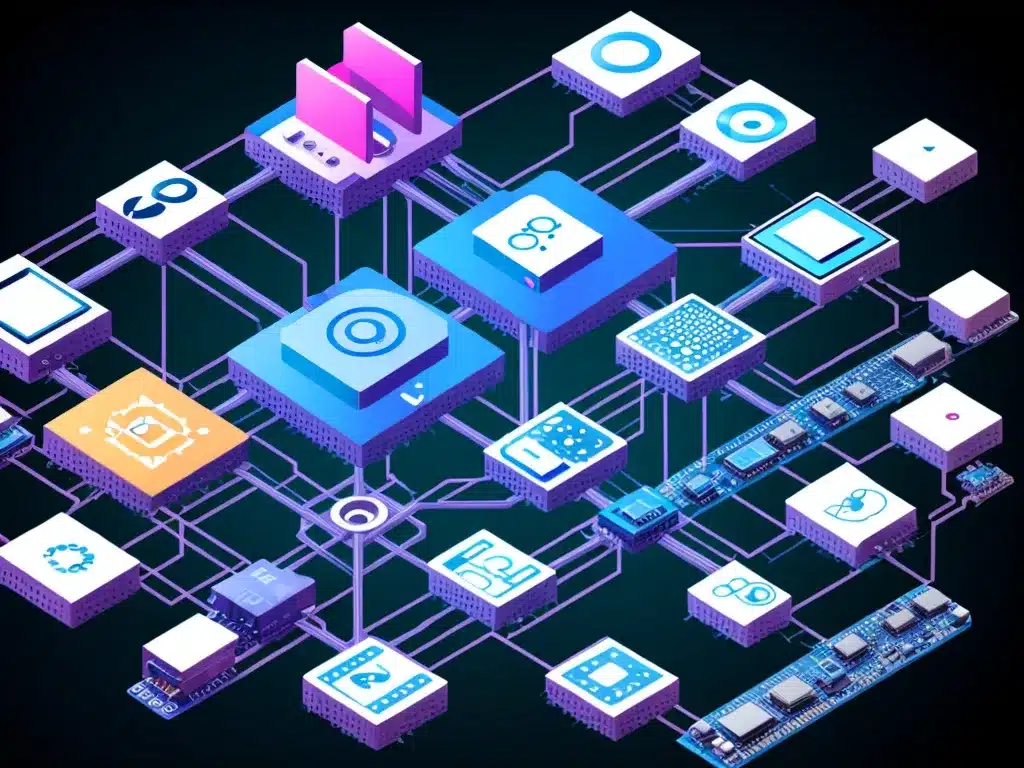
Open Source IoT Development Platforms
The Internet of Things (IoT) is transforming industries by connecting physical objects and allowing them to exchange data. To build IoT solutions, developers need flexible and open source platforms. In this article, I will compare the most popular open source IoT development platforms and highlight their key capabilities.
Arduino
Arduino is one of the most popular open source electronics platforms. It is easy to use, flexible, and has a large community supporting it.
Some key aspects of Arduino:
- Arduino boards are inexpensive, flexible, and easy to program. The most popular is the Arduino Uno.
- It uses a simple C/C++ based programming language. This makes it easy for beginners to get started.
- There is a huge open source library of additional boards, shields and code examples. This supports rapid prototyping.
- The open source Arduino Software (IDE) runs on Windows, Macintosh, and Linux. This provides a consistent development experience.
For IoT projects, Arduino can be used to build simple devices and prototypes. It is a good platform for hobbyists and educational purposes. However, for more complex commercial IoT solutions, other platforms are more capable.
Raspberry Pi
The Raspberry Pi is a series of small single-board computers developed by the Raspberry Pi Foundation. Here are some of its key highlights:
- It can run various Linux distributions, including Raspbian. This provides a full operating system for building IoT devices.
- It has GPIO pins that can interface with electronics, sensors and actuators.
- There are various models with different capabilities:
- The Raspberry Pi Zero is inexpensive but limited. Good for simple projects.
- The Raspberry Pi 3 and 4 have more power for complex applications.
- It has built-in WiFi/Bluetooth and Ethernet networking capabilities.
- The Raspberry Pi Camera Module allows capturing video/images.
The Raspberry Pi is very versatile for IoT prototyping and proof-of-concepts. It is more capable than Arduino for complex IoT solutions requiring an OS and connectivity. However, it may not be suitable for mission-critical commercial deployments.
Intel IoT Developer Kit
The Intel® IoT Developer Kit is optimized for IoT product development. It includes:
- Intel Quark microcontroller – for sensors, controls and securit
- Development board with I/O interfaces
- Software development environment with C/C++ and Python libraries
- Security technologies like data encryption
Key features:
- Provides an end-to-end solution for developing commercial IoT products
- Compatible with common IoT connectivity standards like Bluetooth LE, IPv4/IPv6 networking
- Includes sensor drivers and embedded algorithms
- Security features protect against cyberattacks
- Support for Linux and various RTOS like FreeRTOS and ThreadX
The Intel® IoT Developer Kit is a more advanced platform suitable for enterprise-grade IoT product development.
Android Things
Android Things is Google’s IoT platform which leverages the Android ecosystem. Key aspects:
- It allows building IoT devices using the same Android APIs used for mobile apps.
- Developers can reuse their Android development skills and code.
- Ready-to-use client libraries for common IoT peripherals and connections.
- Over-the-air (OTA) updates allow seamless updating of devices.
- First-class security using Google services and encryption.
Android Things reduces development effort and time-to-market for connected devices. With Google’s ecosystem and tools, it is a compelling platform for consumer IoT products.
AWS IoT
AWS IoT is Amazon Web Services’ managed cloud service for IoT applications. Its capabilities include:
- Provides secure bidirectional communication between internet-connected devices and AWS cloud.
- Handles security processes like authentication and data encryption.
- Integrates easily with other AWS services like Lambda, DynamoDB, Machine Learning.
- Manages fleets of IoT devices and collects telemetry data at scale.
- Real-time streaming analytics and machine learning on device data.
AWS IoT removes the complexities around deploying and managing IoT infrastructure at scale. The fully-managed approach appeals to companies lacking specialized IoT expertise. Integrations with AWS machine learning and analytics services allow building smart IoT backends.
Comparison of Platforms
| Platform | Difficulty | Features | Ideal For |
|-|-|-|-|
| Arduino | Beginner | Microcontrollers, C++ libraries | Prototyping, hobbyists |
| Raspberry Pi | Intermediate | Linux OS, connectivity | Learning, product development |
| Intel IoT Kit | Advanced | Commercial-focused, C++/Python dev tools | Enterprise IoT products |
| Android Things | Intermediate | Leverages Android ecosystem | Consumer IoT products |
| AWS IoT | Any Skill Level | Fully-managed, analytics/ML integrations | Companies lacking IoT expertise |
Conclusion
There are many open source IoT platforms available today. Arduino and Raspberry Pi are great for prototypes and learning. For commercial IoT products, Intel® IoT Developer Kit provides embedded tools while AWS IoT offers fully-managed infrastructure. Choosing the right platform depends on technical skills, project complexity and your product vision.












